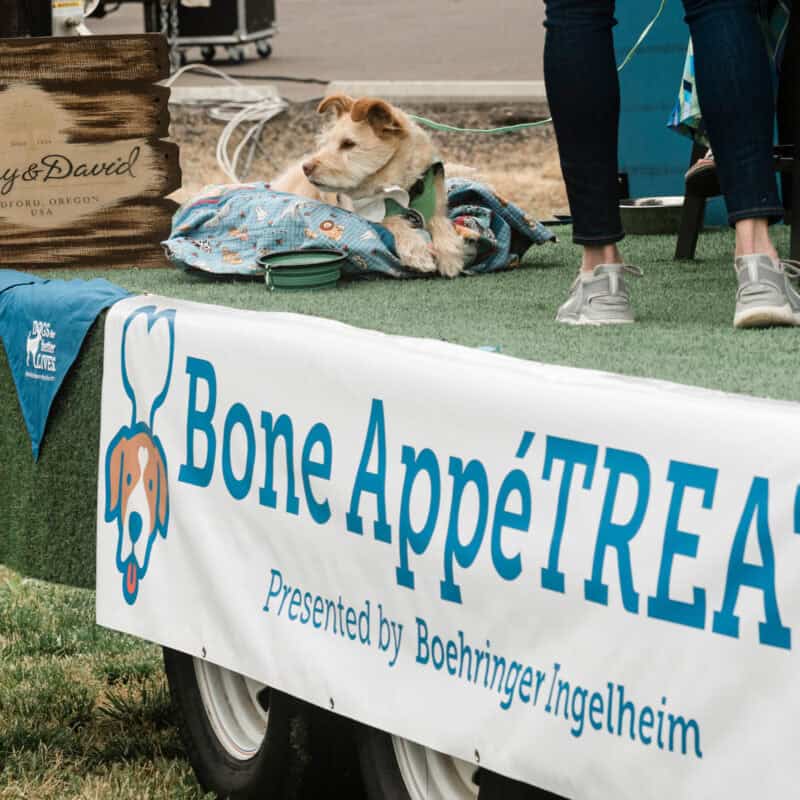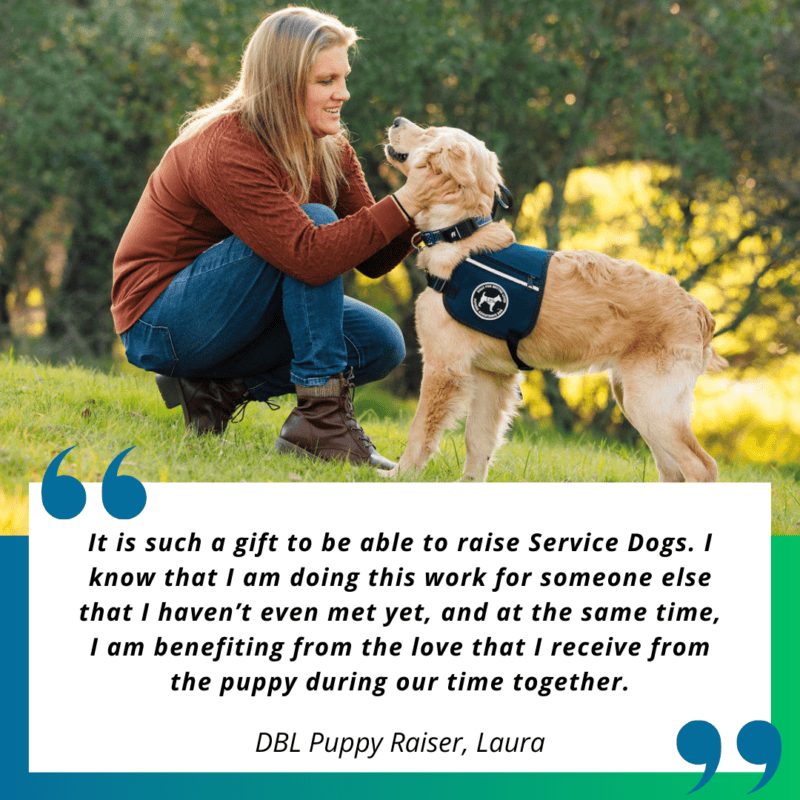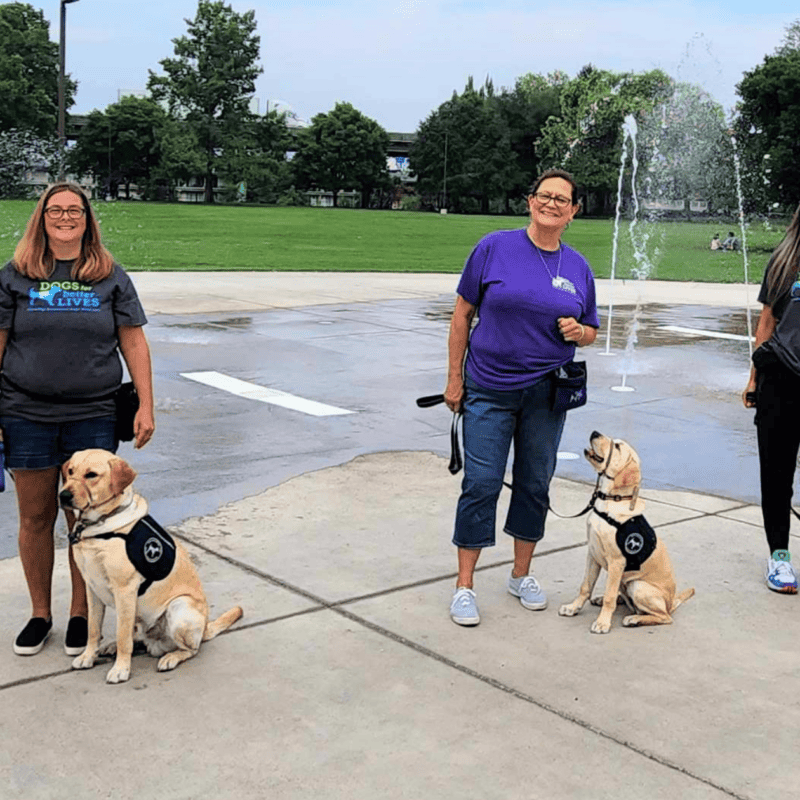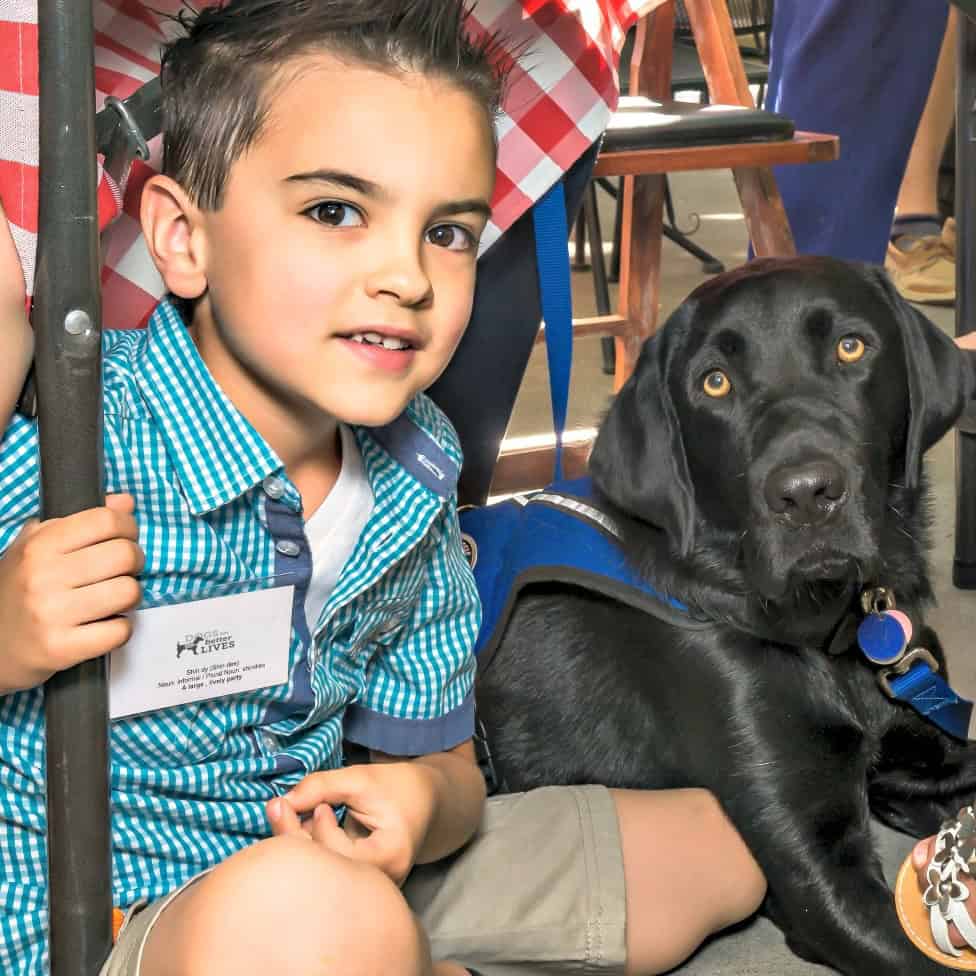According to statistics gathered by ASPCA (The American Society for the Prevention of Cruelty to Animals), around 3.3 million dogs enter shelters annually. Of that number, about 620,000 are returned to their owners and 1.6 million are adopted. This leaves over a million dogs looking for forever homes. This is where Dogs for Better Lives and other Service Dog organizations can come in. We send our Canine Recruiters to shelters housing dog superstars waiting to be found! Many of these shelters are part of our Rescue Assistance Dog Alliance. There, we find dogs with the “spark” that lets us know they’d be great candidates to become Assistance Dogs, helping people with disabilities and providing companionship for those in need.
Why Rescue Dogs Make Excellent Assistance Dogs
With professional training, rescue dogs can do just as well as purpose-bred canines when placed in assistance work. These dogs are resilient, accustomed to transitions, adaptable in different environments, and typically empathetic when working with their trainers and eventual partners.
It’s a common misconception that Assistance Dogs that came from a shelter may be “damaged” in one way or another. In fact, the shelter dogs we’ve brought into our Assistance Dog training programs have been some of the most loving and intuitive creatures we’ve met. When given the chance to thrive, many of these dogs find they are absolutely suited to working and bonding their partners for a living.
Reasons We Look Towards Rescue Dogs for Assistance Work
1. They’re Past the “Puppy” Stage
While our Canine Recruiters won’t shy away from scouting puppies in shelters, we often recruit dogs that are beyond the initial “puppy” stage. As much as we love puppy playtime, this helps us save time with basic obedience training, so we can move on to the more advanced tasks.
2. They’re Used to a Lot of Stimuli
We LOVE shelter teams and the work they do to help homeless dogs in need. And while pups in shelters have warm roofs over their heads and full bellies, let’s be honest…there’s a lot of activity in shelter kennels! Dogs from shelters are used to their sometimes-boisterous bunkmates, and many have lived lives traveling from one environment to the next. Because of this, when we introduce our dogs-in-training to public places—like malls, restaurants, parks and sidewalks—they’ve already got a head start navigating the many distractions that Service Dogs learn to conquer in their training.
3. They Come in All Ages, Breeds, and Sizes
Assistance Dogs can be adults or seniors, too, and they come in all shapes and sizes and have unique personalities. Some sizes are better suited for specific tasks or partners, such as smaller breeds that may be easier for older clients to handle.
4. It Helps to Reduce Pet Overpopulation
Bringing rescue dogs into our Assistance Dog training programs helps reduce overpopulation in shelters, and reduces the need for dogs to be bred for specific tasks. The more we can help get shelter dogs into loving homes—as Service Animals or Career Change pets—the better!
5. Breeds Don’t Matter as Much as Health and Temperament
There truly is no perfect Assistance Dog breed—all breeds, pure or mixed, are capable of loyalty, love, and intelligence. When it comes to evaluating rescue dogs for entrance into our Assistance Dog training programs, we look for characteristics that we’ve found (in over our last 40+ years as an organization) lead to success. Confidence, friendliness, focus, drive…these are qualities that dogs of all breeds and backgrounds are capable of possessing and using in their future careers as Assistance Dogs.











